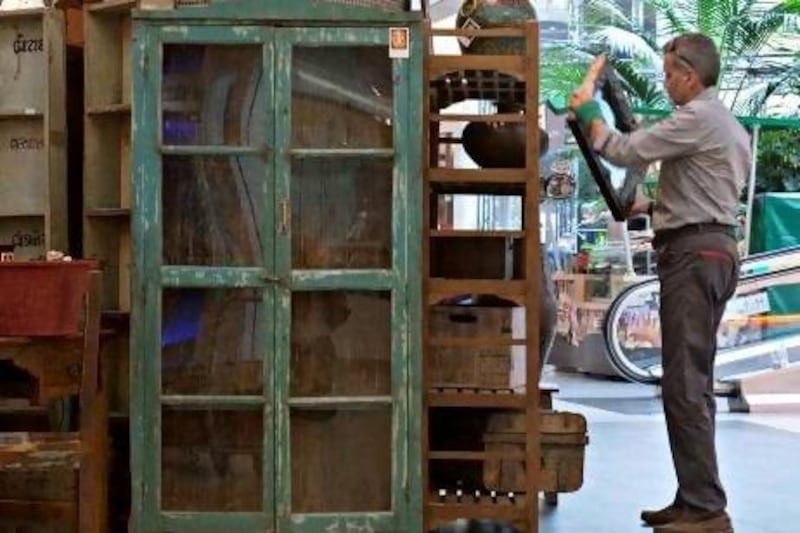What do you do with your old junk? You could try to mend it and make it last that bit longer. You could give it to someone who needs it, or to a charity shop. You could sell it at a jumble sale or simply throw it away. But there is another option: you could always upcycle it.
Upcycling is the new recycling. While the latter is simply a case of using things again, the former uses them in new ways, in more stylish, more design-led, more cleverly thought-out ways. Recycling breaks products down into raw materials then remakes them, often with an overall decrease in value. Upcycling takes them as they are and reconfigures, reconstitutes and reimagines them into something better. Something with more inherent, aesthetic and design value.
Fuelled by the increasingly troubled world economy and the need for environmental awareness in all aspects of society, designers are rescuing what would once have been landfill fodder and turning it into eco-friendly and innovative products. It's a perfect solution: reducing waste and the need for virgin resources while sourcing raw materials for very little - if any - cost.
And it's not just a case of need. In fact, our desire for unique, one-off items is as much responsible for the popularity of the trend as anything else. "Mass produced" has been replaced by "hand crafted" on our most-wanted lists, with character and history as important to us as functionality, making upcycled products as fashionable as they are practical and ethical. They tick the "vintage" trend box, but add something new, something that carries the stamp of 21st century approval.
The sheer variety of goods on offer is incredible. Leftover fabric from the fashion industry is being transformed into patchwork arm chairs. Reclaimed wooden planks from old rowboats are finding new life as quirky cabinets. Shards of broken china are being used as unusual mosaic tiles on mirrors and photo frames. Vinyl records are being melted and reshaped as fruit bowls and bookends. Benedicte Moubarak of Lebanon's 2b Design uses architectural salvage to create home accessories, such as a lamp stand made from a 150-year-old piece of balcony.
By their very nature, one-off upcycled products tend not to be found on the high street. Instead they are the preserve of boutique outfits such as Antika Dubai, which stocks individual items of furniture made from reclaimed wood. Online, the growth of internet shopping has given small designers and producers the chance to sell their wares with very little in the way of start-up costs, whether they break out on their own or choose collective selling options such as Etsy.com, where you can currently find almost 220,000 items tagged as upcycled (up from just under 30,000 in January 2011 - an increase of about 730 per cent).
Pretty much anything can be upcycled, and the process doesn't have to be particularly complicated. In fact, anyone can do it. Need a new way to display your flowers? A collection of old jam jars, each tied with raffia or ribbon and grouped on a pretty tray or mirror, works a treat. What about a place to stow your linens and towels? Stack a couple of vintage suitcases at the bottom of your bed and you have a simple but effective - and very trendy - storage solution. Simply looking at an object in a new way can help you see the potential in it.
If you're at all handy, you could try your hand at fashioning homemade items from rescued items that would otherwise be little more than rubbish. The internet is a great source of inspiration, with image sharing sites like Pinterest.com offering a chance to see what other creatively-minded people have been up to. Just search for upcycling and you'll find a bed headboard made from discarded rowing paddles, shelving constructed from old crates, and a coffee table fashioned from a baking tray covered in fabric - and that's just to start with.
Upcycling furniture is particularly popular. Sometimes something as simple as a coat of paint and a set of new handles or door knobs is enough to transform a shabby old pine bedroom suit into a modern design statement. Choosing the right paint is essential - Annie Sloan's Chalk Paints, for example, don't require an undercoat or any sanding, making them super easy to use. If you really want to be creative, try using blackboard paint, which will instantly turn any surface - the panel end of a child's bed, for example - into a canvas for budding artists.
But you needn't stop there. If you're brave enough, why not try making your own furniture? An old door could become a dining table with the addition of legs, perhaps rescued from a tired trestle table. Or, if you have the know-how to construct a suitable frame, a selection of different drawers can come together to form a fabulously quirky dresser. Try painting some of the drawers and leaving others in their raw state for an even more artistic statement.
If you need inspiration, there are plenty of books on the subject, including many "how to" volumes that will take you step by step through a variety of projects. For example, Upcycling: Create Beautiful Things with the Stuff You Already Have, by American environmental lifestyle expert and TV presenter Danny Seo and photographer Jennifer Levy, includes ways to turn old leather belts into a doormat, worn-out paperbacks into bud vases and even tennis balls into a country swing.
The trick is to start seeing the potential in every item you're about to relegate to the trash heap. Don't be afraid to experiment. If your first attempt fails, you can just break it all down and start again. What's the worst that can happen? After all, you're using junk you were going to give away, throw out or donate to charity anyway.





